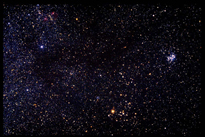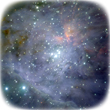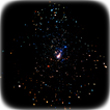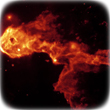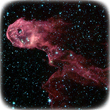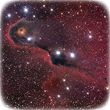The Case of the Massive Forming Star
Clues about massive star formation sites
Andromeda
It is our nearest spiral galaxy neighbor in space. It’s visible from the northern hemisphere with the naked eye as a fuzzy smudge of light on a moonless autumn night. With a telescope, Andromeda reveals spiral arms, and clouds of dust and gas. Studies reveal that Andromeda contains several billion stars. Andromeda is located 2.5 million light years away and is part of the Local Group—a concentration of galaxies that includes our own Milky Way, the Triangulum Galaxy, and about 35 other, smaller galaxies.
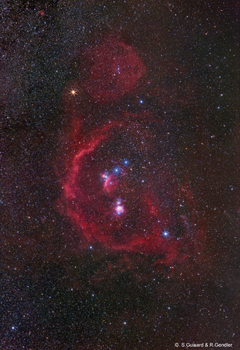 Image courtesy of and © Stéphane Guisard & Robert Gendler, www.astrosurf.com/sguisard
Image courtesy of and © Stéphane Guisard & Robert Gendler, www.astrosurf.com/sguisard
Taurus
Taurus, "The Bull," is the winter constellation that contains the prominent Pleiades and Hyades star clusters. These are relatively bare stars, without shrouds of gas and dust. Taurus also contains patchy dark clouds that obscure background starlight. Inside these, astronomers use telescopes to see hundreds of newly-forming stars. Many appear to be similar to our Sun when it was young, 4 billion years ago. The distance is only 300 light-years.
Orion
Orion, "The Hunter," is a winter constellation. It’s easy to locate in the night sky; look for the three prominent stars in "Orion’s Belt." Something that Orion has and Taurus does not is visible nebulosity—a diffuse patch of light that appears at the center of the "Hunter’s Sword," which hangs just below the belt. This is the Orion Nebula. Studies show that this is a large stellar nursery containing enough gas to make thousands of stars. The distance is 1500 light-years, yet the young stars in the nebula make it bright enough to see with the naked eye.

